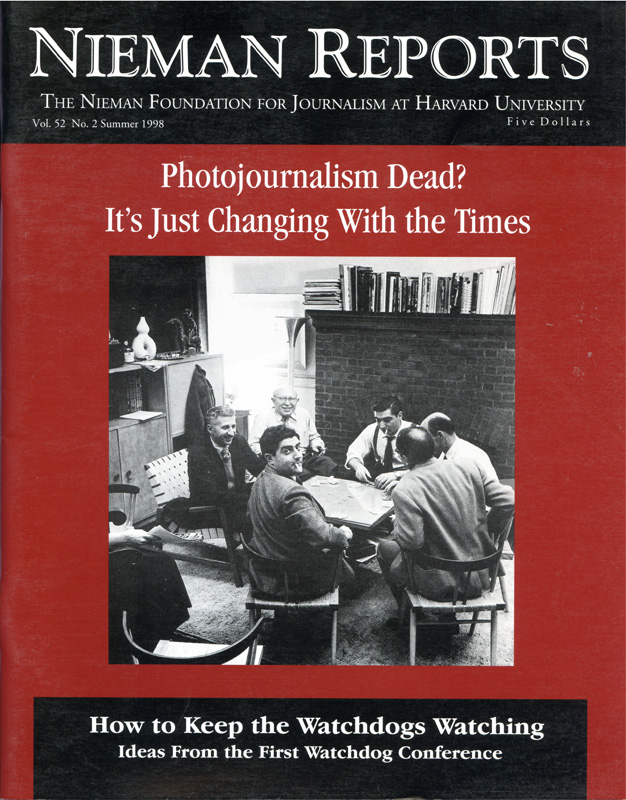It was about 1:30 a.m. on a day in 1982 when I awoke to a second alarm of a fire on Newbury Street in Boston’s Back Bay. I was racing to the scene when another call came over one of my scanners about a jumper on Longwood Avenue outside the Harvard Medical School. I decided to check that out first.
The fire department and police were just arriving as I got there. A young woman stood on a wall about 15 feet above the sidewalk—not very high but high enough to hurt her if she leaped headfirst. There was a lot of street light so I really did not need my strobe, and I did not want to use it anyway as I am always afraid that the flash could startle the person into jumping.
This situation went on for about a half hour with negotiators trying to talk the woman down. Finally the rescuers moved in with hand ladders and a blanket to catch her in. One firefighter was walking across a wall trying to sneak up on her.
Several other photographers showed up as this was happening and started to take flash pictures. I then began to use my strobe. As the woman kept moving away from the rescuers she began to lose her footing.
I hoped to get her in mid-air. I waited for her to fall off the structure. The timing was perfect and I took the shot as her arms and legs were floundering in the air. Excited, I drove to The Herald. I could not wait to tell my girl friend, now my wife, and called to tell her why I wasn’t home and what a great picture I had taken. She mumbled something and hung up. I emptied out the developer, put the tank in the hypo and waited. It was going to be great. I even let the negatives completely wash without looking at them first.
Then the big moment arrived. I looked at the negatives. The strobe had not recycled fast enough, and I missed the picture of her in mid-air. I had her on the wall and then in the blanket but nothing in between. She was not hurt.
That whole day I was sick. I was sure the UPI photographer who was there or worse, The Boston Globe photographer, had gotten the picture. It was almost midnight Saturday before I found out no one had gotten the picture. Was I relieved. I hate to be beat.
The lesson: you do not have the picture until you see the developed negative.
The fire department and police were just arriving as I got there. A young woman stood on a wall about 15 feet above the sidewalk—not very high but high enough to hurt her if she leaped headfirst. There was a lot of street light so I really did not need my strobe, and I did not want to use it anyway as I am always afraid that the flash could startle the person into jumping.
This situation went on for about a half hour with negotiators trying to talk the woman down. Finally the rescuers moved in with hand ladders and a blanket to catch her in. One firefighter was walking across a wall trying to sneak up on her.
Several other photographers showed up as this was happening and started to take flash pictures. I then began to use my strobe. As the woman kept moving away from the rescuers she began to lose her footing.
I hoped to get her in mid-air. I waited for her to fall off the structure. The timing was perfect and I took the shot as her arms and legs were floundering in the air. Excited, I drove to The Herald. I could not wait to tell my girl friend, now my wife, and called to tell her why I wasn’t home and what a great picture I had taken. She mumbled something and hung up. I emptied out the developer, put the tank in the hypo and waited. It was going to be great. I even let the negatives completely wash without looking at them first.
Then the big moment arrived. I looked at the negatives. The strobe had not recycled fast enough, and I missed the picture of her in mid-air. I had her on the wall and then in the blanket but nothing in between. She was not hurt.
That whole day I was sick. I was sure the UPI photographer who was there or worse, The Boston Globe photographer, had gotten the picture. It was almost midnight Saturday before I found out no one had gotten the picture. Was I relieved. I hate to be beat.
The lesson: you do not have the picture until you see the developed negative.



